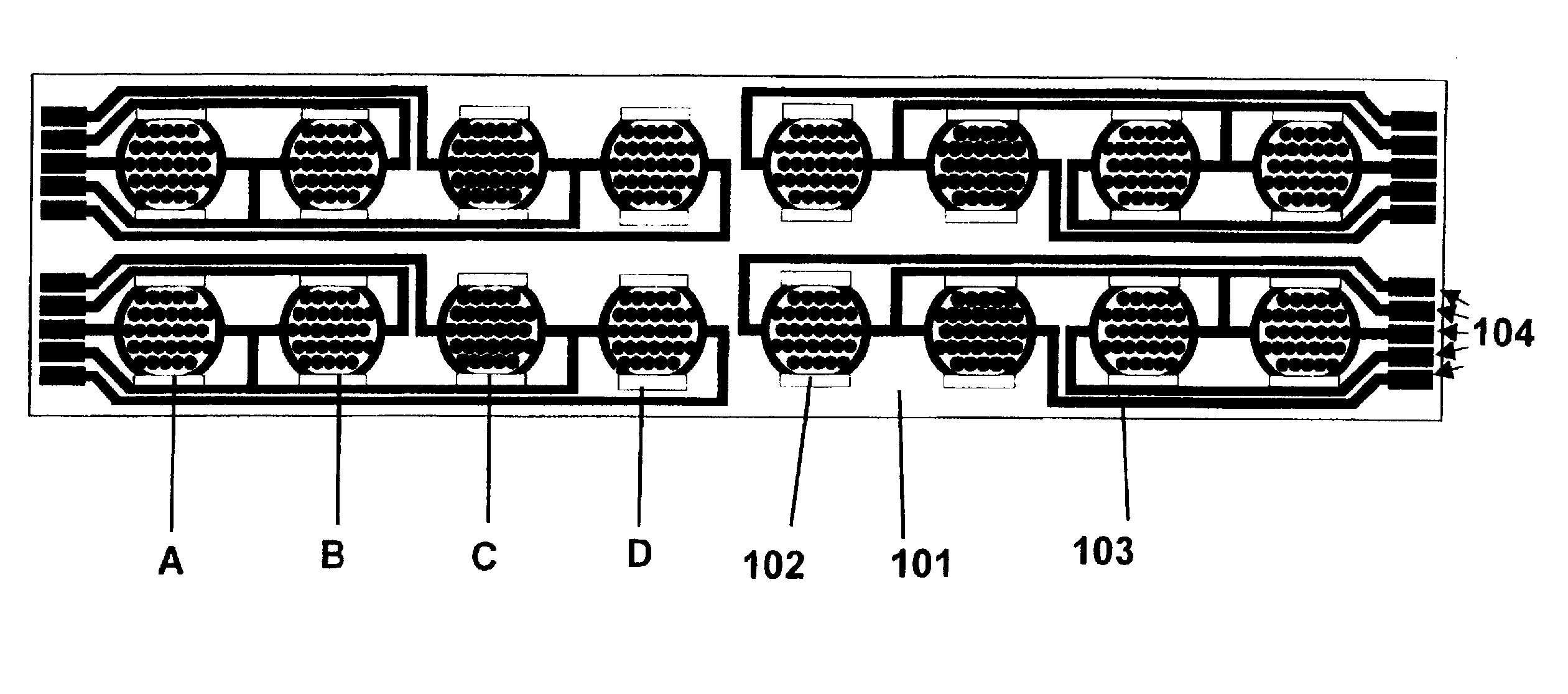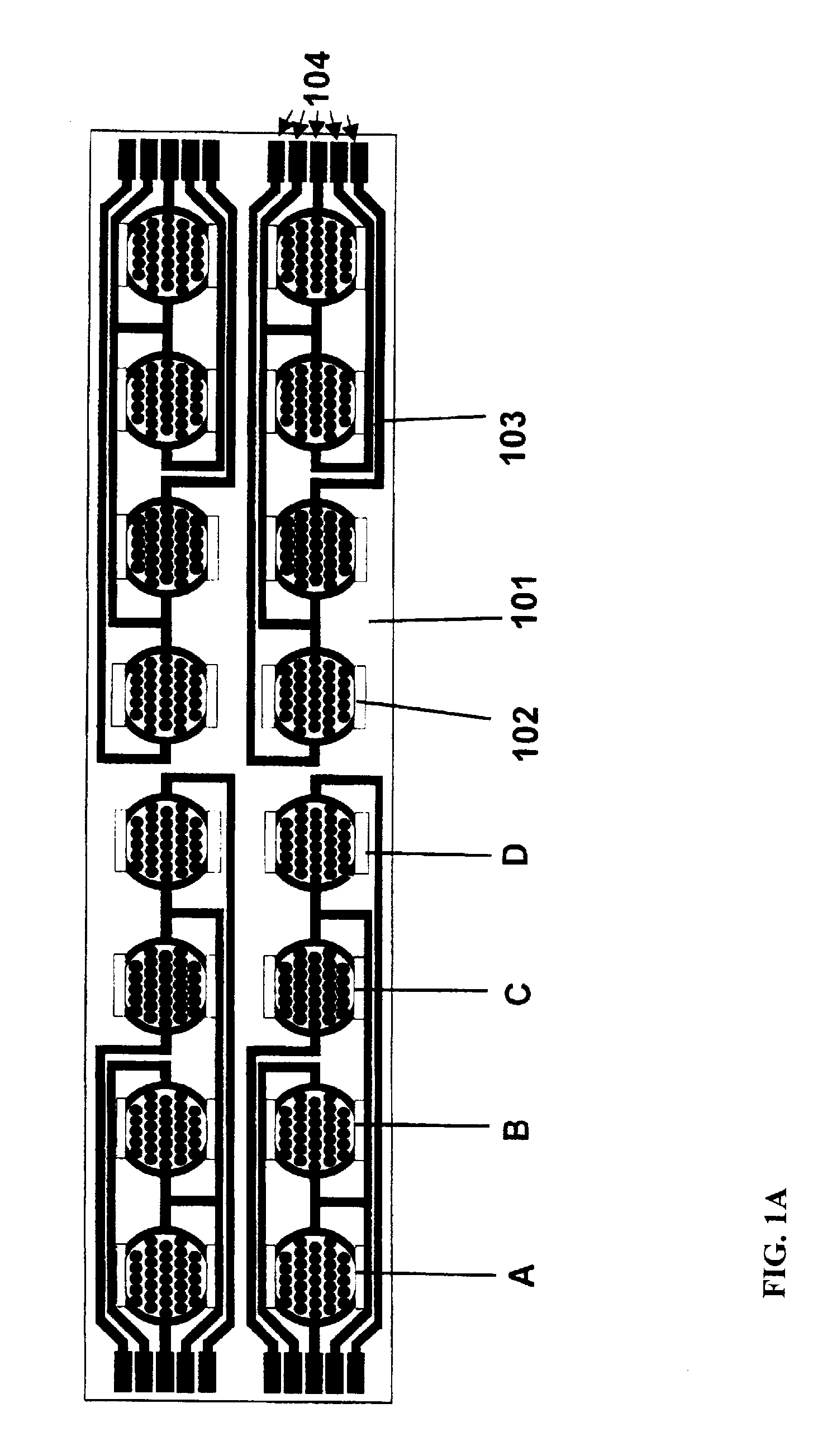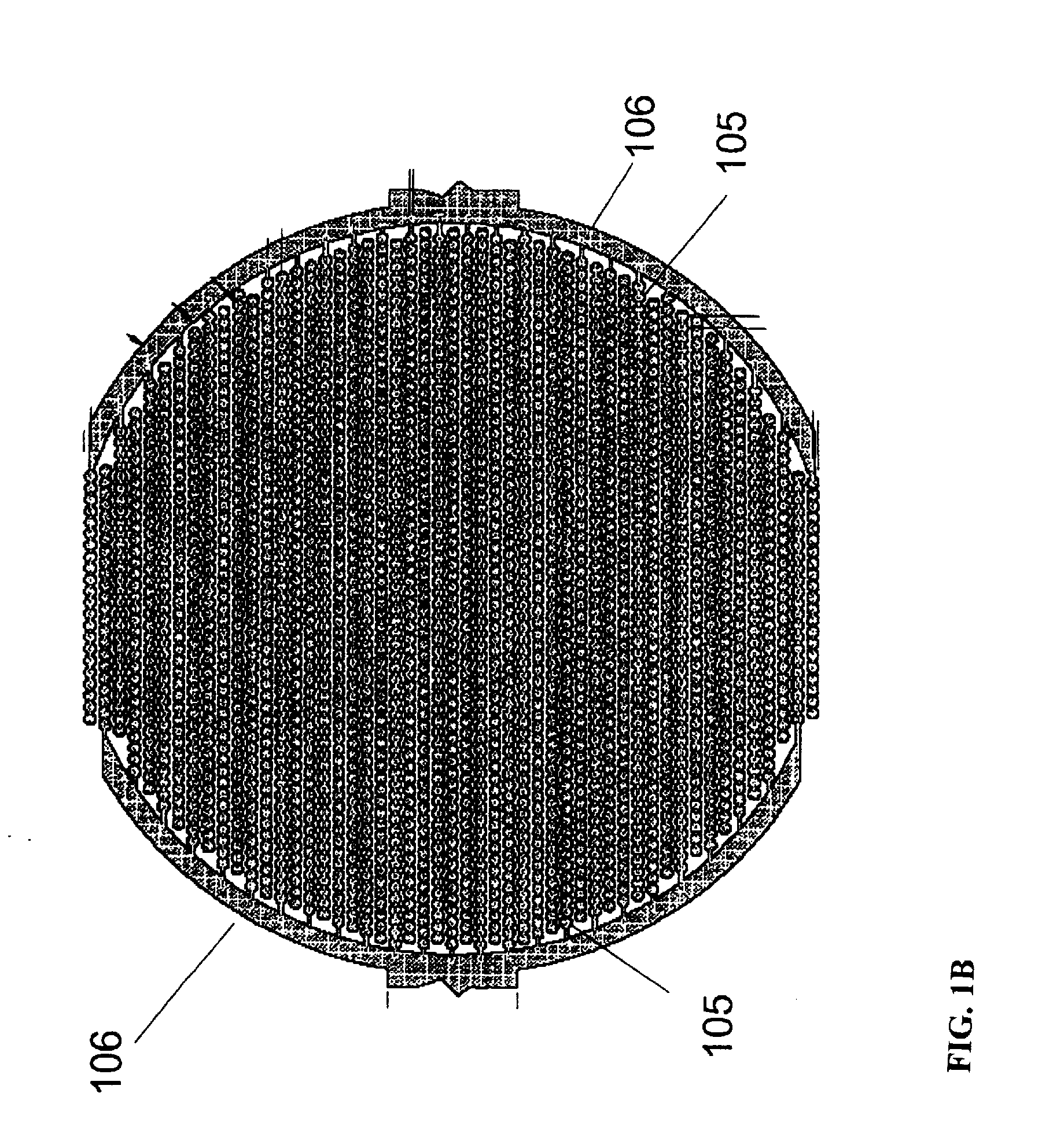Label-Free Monitoring of Excitation-Contraction Coupling and Excitable Cells Using Impedance Based Systems with Millisecond Time Resolution
a technology of excitation-contraction coupling and impedance-based systems, which is applied in the field of label-free monitoring of excitation-contraction coupling and excitable cells using impedance-based systems with millisecond time resolution, can solve the problems of not being very amenable to the high throughput demands of the pharmaceutical industry, not yet widespread, and labor-intensive approaches
- Summary
- Abstract
- Description
- Claims
- Application Information
AI Technical Summary
Benefits of technology
Problems solved by technology
Method used
Image
Examples
example 1
Impedance Monitoring of Attachment, Growth and Viability of Mouse ES Cell-Derived Cardiomyocytes
[0165]Since isolated primary cardiomyocytes, ES-derived cardiomyocytes and adult stem cell-derived cardiomyocytes can be maintained in culture, these cells provide a desirable model system to study cardiomyocytes as well as cardiomyocyte modulation. The present example demonstrates the use of the ACEA RT-CES system to measure and monitor the attachment, growth and viability of mouse ES-derived cardiomyocytes which were seeded at different seeding densities.
[0166]Mouse ES cells were seeded at a density ranging from 3000 cells to 50,000 cells per well in E-PLATES (Acea Biosciences, San Diego, Calif.) precoated with fibronectin. The attachment, growth and viability of the cells were monitored on RT-CES system measuring impedance signal in the form of cell index every 30 minute for 48 hours. At about 48 hrs after cell seeding, the growth of the cells had ceased and the appearance of beating c...
example 2
Detection of Cardiotoxic Effects Using Real Tim Impedance Monitoring
[0168]As an example, we describe here the use of the ACEA RT-CES system to measure and monitor the attachment and growth of mouse ES cells derived cardiomyocytes and subsequently treated with a cytotoxic agent (FIG. 4).
[0169]Mouse ES-derived cardiomyocytes were seeded at a density of 25,000 cells per well in E-PLATES precoated with fibronectin. The attachment and growth of cells were monitored on RT-CES system for 72 hours and then treated with increasing doses of the compound of sodium dichromate dehydrate which is known to induce cytotoxicity. According to FIG. 4A the plot of normalized cell index for cells in different wells treated with different concentrations of sodium dichromate dehydrate (SDD), SDD causes a concentration dependent decrease in viability of ES-derived cardiomyocytes. To quantify the extent of sodium dichromate dehydrate activity against the cardiomyocytes, the normalized cell indices at 24 hrs...
example 3
Real Time Monitoring of Mouse ES Cell-Derived Cardiomyocytes and Inducing Hypertrophy
[0170]As an example, we describe here the use of the ACEA RT-CES system to measure and monitor the attachment and growth of mouse ES cells derived cardiomyocytes and subsequently treated with isoproteranol, a β2 adrenergic receptor agonist known to induce hypertrophy (FIG. 5A).
[0171]Mouse ES-derived cardiomyocytes were seeded at a density of 25,000 cells per well in E-PLATES precoated with fibronectin. The attachment and growth of the cells were monitored on RT-CES system for 72 hours and then treated with increasing doses of the compound isoproteranol. According to FIG. 5A, isoproteranol causes a concentration dependent change in cell index readings. The timing of the cell index change is consistent with a change in the morphology of the cells which we have shown previously for other GPCR agonists in primary cells (Yu et al (2006): Real-time monitoring of morphological changes in living cells by el...
PUM
| Property | Measurement | Unit |
|---|---|---|
| width | aaaaa | aaaaa |
| width | aaaaa | aaaaa |
| time resolution | aaaaa | aaaaa |
Abstract
Description
Claims
Application Information
 Login to View More
Login to View More - R&D
- Intellectual Property
- Life Sciences
- Materials
- Tech Scout
- Unparalleled Data Quality
- Higher Quality Content
- 60% Fewer Hallucinations
Browse by: Latest US Patents, China's latest patents, Technical Efficacy Thesaurus, Application Domain, Technology Topic, Popular Technical Reports.
© 2025 PatSnap. All rights reserved.Legal|Privacy policy|Modern Slavery Act Transparency Statement|Sitemap|About US| Contact US: help@patsnap.com



